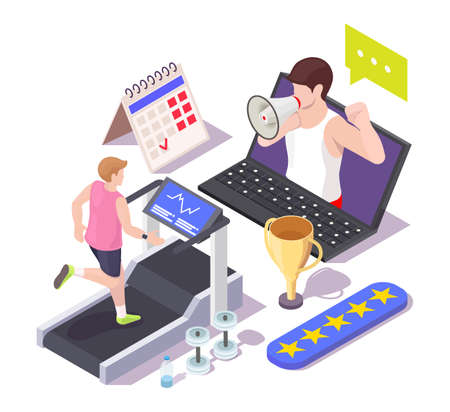Introduction to Assistive Technology in Daily Living
In today’s world, assistive technology is changing the way people with disabilities and older adults live their daily lives in the United States. These high-tech tools are designed to help individuals overcome challenges and do things on their own, boosting confidence and independence at home, at work, and in the community.
What Are Assistive Devices?
Assistive devices are products or systems that help people perform tasks they might otherwise find difficult or impossible because of physical, sensory, or cognitive limitations. These can range from simple items like grab bars and walkers to advanced technology such as smart home devices and voice-activated assistants.
How Assistive Devices Improve Independence
The main goal of assistive technology is to make everyday activities easier and safer. For example, someone with limited mobility might use a powered wheelchair to move around independently, while a person with low vision could use screen-reading software to access information online. The right device can mean the difference between relying on others for basic needs and being able to manage daily routines independently.
Types of High-Tech Assistive Devices Commonly Used in the U.S.
| Device Type | Main Features | Who Benefits |
|---|---|---|
| Smart Home Systems (e.g., Alexa, Google Home) | Voice control for lights, appliances, security | Aging adults, mobility impairments |
| Powered Wheelchairs & Mobility Scooters | Battery-powered movement, adjustable seating | People with limited mobility |
| Environmental Control Units (ECUs) | Remote operation of home devices via switch or voice | Individuals with severe physical disabilities |
| Wearable Alert Systems | Fall detection, emergency response buttons | Seniors living alone, those at risk of falls |
| Communication Devices (AAC devices) | Speech-generating apps and touchscreens | People with speech or language difficulties |
| Adaptive Computer Hardware/Software | Larger keyboards, screen readers, eye-tracking tech | Individuals with vision or dexterity impairments |
The Impact on Daily Living in America
The integration of these technologies is transforming daily routines across the country. People are now able to cook meals using adapted kitchen tools, stay connected with loved ones through accessible smartphones, and enjoy entertainment using voice-controlled remotes. As innovation continues, more Americans are gaining the ability to live life on their own terms—safely and confidently.
2. Smart Home Devices: Revolutionizing Accessibility
Making Everyday Life Easier with Smart Technology
Smart home devices are transforming the way people with disabilities or limited mobility live independently. With the latest high-tech assistive devices, managing daily tasks at home is becoming easier and more convenient than ever before. These innovations use technology to create safer, more accessible living spaces tailored to individual needs.
Popular Smart Home Technologies for Independence
| Device Type | Main Features | How It Helps |
|---|---|---|
| Voice-Activated Assistants (e.g., Amazon Alexa, Google Assistant) |
Hands-free operation Control smart devices Reminders & routines |
Allows users to manage lights, thermostats, appliances, and even make calls using only their voice. Great for individuals who have difficulty with fine motor skills. |
| Automated Lighting Systems | Scheduled lighting Motion sensors Dimmable controls |
Improves safety by ensuring well-lit pathways and rooms. Lights can turn on/off automatically, reducing fall risks and providing peace of mind. |
| Smart Security Systems | Video doorbells Remote locks 24/7 monitoring |
Makes it easy to see who’s at the door, unlock doors remotely, and monitor the home from a smartphone. Enhances security for people living alone or with limited mobility. |
The Benefits of Smart Home Integration
Integrating these technologies helps people customize their living environments for maximum comfort and independence. For example, a person with limited hand function can use a voice assistant to control multiple devices around the house without needing to physically interact with switches or remotes. Automated lighting ensures every room is safely illuminated when needed, while smart security systems offer added protection and peace of mind.
User Stories: Real-Life Impact
Many Americans are already experiencing the benefits of these smart home solutions. A senior living alone may rely on motion-activated lights to prevent nighttime falls. Someone recovering from surgery might use a voice assistant to set medication reminders or adjust their thermostat without getting up. These real-life examples show how modern assistive technology is making homes safer and more accessible for everyone.

3. Mobility Aids and Wearable Tech
Empowering Movement with Advanced Devices
Staying active and independent is essential for living life to the fullest. Thanks to rapid advancements in technology, people with mobility challenges now have more options than ever before. High-tech mobility aids and wearable tech not only make daily activities easier but also help users feel more connected with their communities.
Latest Innovations in Mobility Devices
The newest generation of mobility devices includes powered wheelchairs, exoskeletons, and wearable trackers. These tools are designed to provide greater freedom, safety, and confidence when moving around at home or out in public spaces.
| Device Type | Main Features | How It Supports Independence |
|---|---|---|
| Powered Wheelchairs | Joystick or touch controls Customizable seating Long battery life Smart navigation systems |
Makes it easy to travel longer distances, maneuver tight spaces, and participate in community events independently. |
| Exoskeletons | Wearable robotic support Assist with walking or standing Lightweight materials Adjustable fit |
Helps users stand up, walk, or exercise safely—enhancing physical therapy outcomes and allowing more social interaction. |
| Wearable Trackers | Activity monitoring Fall detection GPS location services Health data tracking |
Keeps users safe by alerting caregivers if a fall occurs and encourages healthy habits through activity reminders. |
The Impact on Community Engagement and Personal Freedom
High-tech mobility aids do more than just get people from point A to point B. They open doors to new opportunities—whether its joining a local club, going grocery shopping independently, or taking part in outdoor activities. Features like real-time health monitoring and GPS give peace of mind to both users and their families. With these tools, individuals can confidently navigate their environments, stay active, and remain connected with friends and neighbors.
4. Communication and Cognitive Support Tools
Modern technology has opened up a world of possibilities for people who face challenges with communication or memory in their daily lives. These high-tech assistive devices are designed to help individuals express themselves, stay connected, and manage daily tasks more independently.
Augmentative and Alternative Communication (AAC) Devices
AAC devices are electronic tools that help people who have difficulty speaking. These can range from simple picture boards to advanced computer-based systems. They allow users to select words, phrases, or images that are then spoken aloud by the device. This is especially helpful for those with conditions like cerebral palsy, autism, or after a stroke.
Types of AAC Devices
| Device Type | Main Features | Typical Users |
|---|---|---|
| Speech-Generating Tablets | Touchscreen interface, customizable vocabulary, portable | Children and adults with speech impairments |
| Text-to-Speech Apps | Runs on smartphones/tablets, converts typed text into speech | People with temporary or permanent voice loss |
| Symbol-Based Communicators | Pictograms and symbols, easy navigation | Younger users or those with limited literacy skills |
Cognitive Reminder Systems
Cognitive support tools are designed to help people who may struggle with memory or organizational skills due to aging, brain injury, or other health conditions. These devices make it easier to remember appointments, take medications on time, or complete daily routines.
Popular Cognitive Support Solutions
- Smartphone Reminder Apps: Set alarms for medications or appointments with easy-to-use mobile apps.
- Wearable Smartwatches: Offer gentle reminders and notifications right on your wrist.
- Voice Assistant Devices: Products like Amazon Alexa or Google Home can provide verbal prompts for daily activities.
The Impact on Daily Living
With these high-tech communication and cognitive support tools, people can participate more fully in their communities and maintain their independence at home. Whether its having a conversation with loved ones using an AAC device or remembering important tasks with a smartwatch reminder, these technologies are making everyday life easier and more accessible for everyone.
5. Overcoming Barriers: Challenges and Future Directions
Current Challenges in Accessing High-Tech Assistive Devices
While high-tech assistive devices are transforming lives and boosting independence, many people in the United States still face significant barriers to accessing these innovations. Two of the main challenges are affordability and accessibility. Advanced technology often comes with a high price tag, and not everyone has insurance coverage or financial resources to purchase these devices. Additionally, some devices may not be available in certain regions, especially in rural or underserved communities.
Key Barriers Faced by Americans
| Barrier | Description | Who is Most Affected? |
|---|---|---|
| Affordability | The cost of high-tech devices can be prohibitive for many families, especially when insurance does not fully cover them. | Low-income individuals, uninsured or underinsured people |
| Accessibility | Devices may be hard to find or purchase locally, and some users need specialized training to use them effectively. | People in rural areas, older adults without tech support |
| Awareness | Lack of information about available technologies and how they can help with daily living. | Seniors, caregivers, non-English speakers |
| Device Customization | Not all devices fit every user’s specific needs; personalization can be limited or costly. | People with unique disabilities or complex needs |
Looking Ahead: Innovation and Support Systems
The future is promising for assistive technology. Tech companies are working on more affordable solutions, open-source designs, and devices that are easier to customize. Smart home integration and voice-activated controls continue to expand what’s possible. At the same time, more U.S.-based organizations are offering device lending programs and community tech support hubs.
The Role of Policy and Advocacy in the U.S.
Government policy plays a huge role in breaking down barriers. Advocates are pushing for stronger enforcement of laws like the Americans with Disabilities Act (ADA) and increased funding for Medicaid waivers that cover assistive technology. There are ongoing discussions about expanding insurance coverage for newer devices and streamlining the process for getting adaptive equipment approved.
What’s Next?
With advances in artificial intelligence, 3D printing, and mobile connectivity, tomorrow’s assistive devices will likely be smarter, more personalized, and even more accessible than today’s options. Continued advocacy and public awareness will help ensure that everyone who can benefit from these technologies has a fair shot at independence in daily living.


